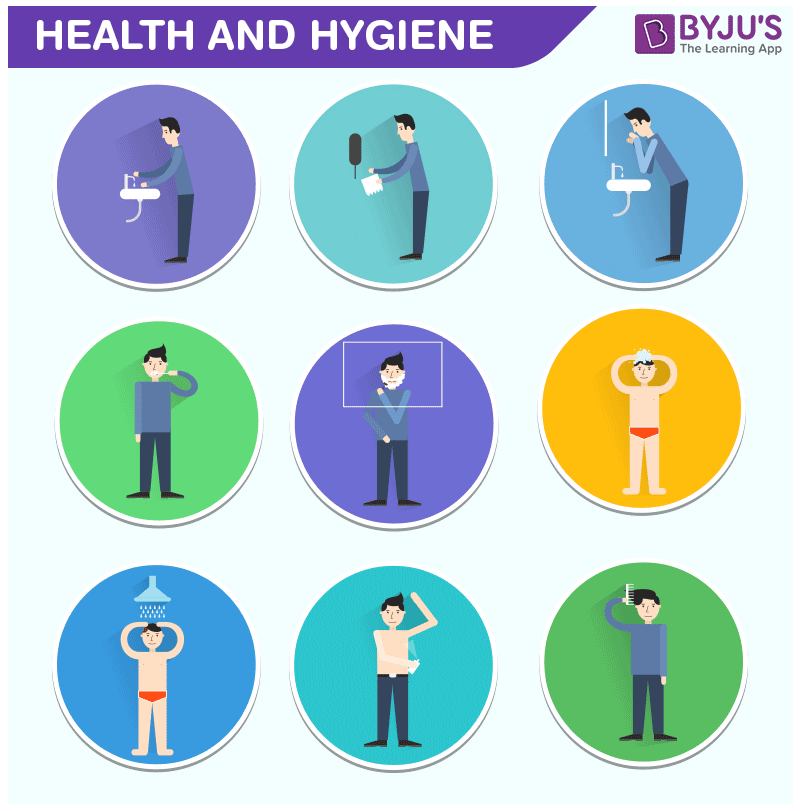Grooming and maintaining cleanliness are vital for a pleasing appearance as well as a healthy body. Keeping oneself clean will invariably make one free of infections. Poor hygiene is directly related to illness. Here, let’s look at some ways to maintain personal hygiene with a diagram.

Personal Hygiene
Personal hygiene is widely practised at home or individual level. It mostly involves maintaining a clean body and clothes. It is generally employed to minimise or prevent the spread of communicable diseases.
- Washing hands is the first and foremost step toward personal hygiene. Fingernails carry millions of germs, and thus they must be trimmed and kept dirt-free. Washing hands is important before and after every activity. Especially, before and after eating food, after handling animals, after using the toilet, etc.
- The food particles left in the mouth can lead to bad breath and also cavities. Thus the use of mouthwash and regular brushing is vital to maintain oral hygiene. Also, rinse the mouth after every meal to get rid of the tiny food particles.
- Bathing regularly will help in keeping body odour in check. Maintaining body hygiene will also invariably increase one’s self-esteem.
- Shampooing and using proper body cleansers are also necessary for maintaining personal hygiene. Cleansing the hair with shampoo and combing it regularly will get rid of dandruff and keeps scalp health in check.
- The most neglected part of body hygiene is foot hygiene. When feet remain closed inside shoes, they do not get air and accumulate sweat and bad odour. Thus one must wash the feet regularly and wear washed and dried socks.
- Wearing clean clothes is also a part of personal hygiene.
- The accumulation of ear wax should also be kept in check. The ear wax secretion collected at the outer part of the ear has the ability to collect dust particles. Thus it should be cleaned at regular intervals.
- Medical hygiene is also a part of personal hygiene. Open wounds should be properly dressed, and bloodstains must be cleaned as they can become a breeding ground for germs.
Most of these personal hygiene practices involve water. Thus, the acronym WASH (water supply, sanitation and hygiene). Enhancing access to WASH services has a direct positive impact on personal hygiene.
Frequently Asked Questions
What is the definition of hygiene given by WHO?
WHO (World Health Organization) defines hygiene as conditions and practices that help to maintain health and prevent the spread of diseases.
What is the importance of personal hygiene?
Sanitation and personal hygiene are vital for several reasons like social, personal and psychological health. Maintaining personal hygiene will prevent the spread of infections and diseases.
What is WASH?
WASH stands for – water, sanitation and hygiene. Affordable, sustainable and universal access to WASH is vital in maintaining public health and also personal hygiene. Access to WASH services can invariably reduce illness, poverty and death.
Related Articles:

Keep exploring BYJU’S Biology for more such exciting topics.
Comments